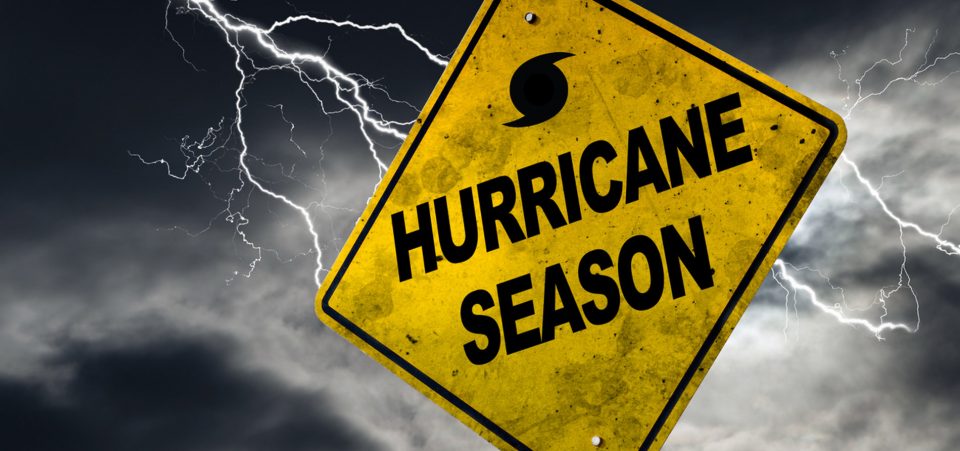Pre Irma Damage And After-Effects Could Cost the U.S. Economy 12-Digit Sums
How much will Hurricane Irma cost the U.S. economy? In a nutshell, an immense amount. While they’re still tallying up Houston’s economic costs, Irma damage could potentially triple or quadruple that outcome. It’s a double-barrel calamity the likes of which America has never witnessed.
And expensive. The low-end estimates of Irma’s impending wrath start around the $50.0-billion mark. That’s the estimated amount of damage Hurricane Katrina caused in 2005, which remains the single-most expensive storm in U.S. history. But in a worst case scenario, Irma could unleash damages three times higher, crippling the book values of many insurers and reinsurers.
Anticipating the carnage, insurance stocks have been the worst-performing sector over the past month. The iShares Dow Jones US Insurance Index ETF (NYSEARCA:IAK) has shed 9.13% since August 3—a big move for a normally placid sector. Individual reinsurers like Validus Holdings, Ltd. (NYSE:VR) have descended much further (over 22% since August 3).
The tens of billions of dollars shaved off insurance stocks is but one way Hurricane Irma is costing the U.S. economy. The are numerous other ways not discussed which affect U.S. economic growth in tangible ways.
Take the evacuation for instance. According to the Bureau of Economic Analysis, the Miami-Fort Lauderdale-West Palm Beach, FL area is home to the eighth largest population cluster in the United States (6,012,331 as of 2015). Now, let’s conservatively estimate that 20% of these people work in the region. If, on average, workers don’t resume work for two weeks after the storm, this could shave $1,912 in per capita personal income ($49,819 in 2015) on over 1.2 million workers. (Source: “Miami-Fort Lauderdale-West Palm Beach, FL (MSA),” Bureau of Economic Analysis, last accessed September 8, 2017.)
While building and food retail outlets sell more merchandise, the fallout for the rest of the local economy will be severe. Restaurant visits will plummet, hotel vacancies will soar, anything tourist-related will crater, coffee shops, clothing retail, mall outlets…everything stops. The impacts of Hurricane Irma on U.S. economic growth erode the top line, while locals are much more pronounced.
Hurricane Irma Damage to Cost $130 Billion?
Hurricane Katrina’s final damage bill was around $50.0 billion. But with the way Irma is looking, insurers should consider themselves lucky to receive a bill that “low.” Some of the higher-end Irma damage estimates look downright frightening.
We had our first glimpse of the catastrophe potential when crisis modelers AIR Worldwide and Karen Clark and Company estimated that Hurricane Irma could cause $125.0 to $130.0 billion of insured damage in the worst-case scenario. Think 1926 Miami hurricane in a 2017 modern Miami Metropolis. (Source: “Barclays: “Hurricane Irma’s Insured Damage Could Be The Largest Ever”,” Zero Hedge, September 5, 2017.)
But the newest estimates are unequivocally obscene.
Credit Suisse Group AG believes Irma damage could top $125.0 billion, but double that should Irma make landfall around Miami as a Category-5 storm. That would easily top Harvey, which itself easily toppled Katrina as the most expensive storm ever. (Source: “Hurricane Irma Could Be a $250 Billion Storm According to New Estimates,” Fortune, September 7, 2017.)
Already, reinsurers are bracing for depleted catastrophe reserves and breakeven returns (if they’re lucky). Average Floridians will feel this pain by way of accelerating premiums in 2018 and beyond. As the damage is expected to be evenly distributed between home and commercial properties, businesses will get hit. Higher base costs usually get passed along to the consumer downstream.
Irma certainly won’t help the U.S. economic outlook for 2017. The event probably isn’t big enough to pull the country into recession, and there will be some rebound “stimulus” associated with the rebuild. But all in all, Irma has negative impacts on lost wages, consumption, taxes, utilities, revenues (and more), which will not be completely offset by the future rebuild.
As we can see, the double gut punch which is Hurricanes Harvey and Irma are acting as a drag on the economy. Damage estimates frequently excluded peripheral elements, like lost wages, production, and consumption. Elements which can never be recovered. But the near-term concern is the solvency of the reinsurers, especially should newly-formed Hurricane Jose pummel Florida again a few days later. It’s currently on the same trajectory and might put the insurance in full-bore “code red” territory.
Sadly, consumers and businesses will end up footing the Irma damage bill in drip installments.







